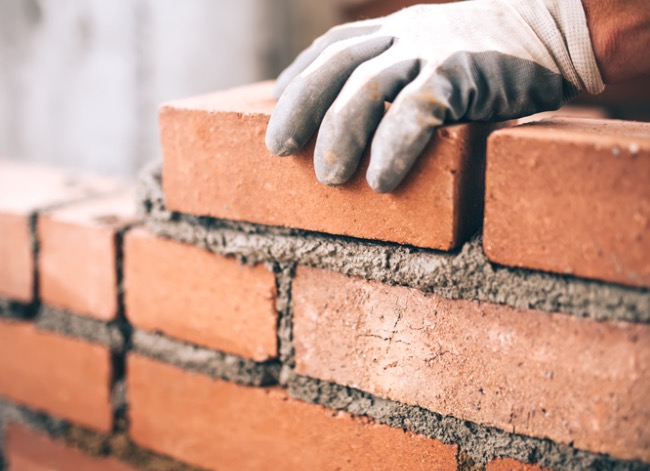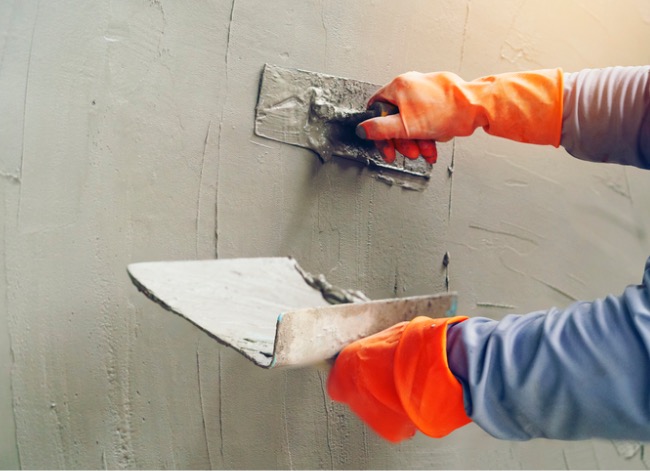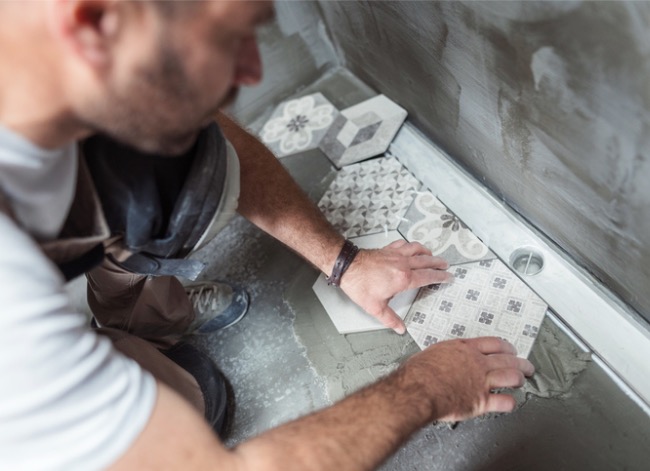

We may earn revenue from the products available on this page and participate in affiliate programs. Learn More ›
Q: We moved into a new home and recently found multiple holes in the brick wall’s mortar joints that look to be caused by a drill. We found several different types of mortar, but I’m still not sure which is the best option to repair these holes. Exactly what is mortar, and is there any difference between the various types? Can we use any type to repair the brick wall?
A: Repairing the brick exterior of the home can range from simply patching a few holes to removing and replacing entire strips of crumbling mortar. In these situations, mortar is the key component that’s necessary to make the repair. Simply put, mortar is a common bonding agent used between masonry materials, like brick or concrete blocks.
Mortar is made from a mixture of cement, fine sand, water, and lime, though it also may include latex, polymer additives, and cellulose derivatives, depending on the type. The mix changes the composition, allowing the mortar to be used for specific purposes or with specific materials.
There are four common types of mortar, including Type S, N, M, and O. They are differentiated based on the compressive strength, flexibility, and bonding properties. Typical repairs to a residential property require Type S or Type N mortar, though Type O is sufficient for non-load bearing walls, like a divider wall inside a building.

Mortar is a mix of cement with fine sand, water, and lime.
Cement is created by mixing limestone, clay, shells, and silica sand together, crushing the mixture, and heating it to about 2,700 degrees Fahrenheit. This powdered product is then mixed with water to create hard, durable cement. However, when cement is combined with fine sand, water, and lime, it produces a sticky mortar paste that acts as a bonding agent or an adhesive.
By mixing fine sand into the cement, nothing really happens because the sand would separate from the cement mixture. Lime solves this issue, binding the sand to the cement so that the new composition increases the flexibility and compressive strength of the concrete, allowing the mixture to take on a new form. The addition of water then activates the mixed components, making a thick and pliable mortar paste that can be applied for a few hours before it hardens.
RELATED: All You Need to Know About Tuckpointing
Mortar is a bonding agent used between bricks, concrete blocks, and other masonry material.
When water is added to cement, it creates a malleable combination that dries within a few hours and fully cures to a strong, rigid piece of cement in about 24 to 72 hours, depending on the product. However, the rigidity of cement makes it a poor option for absorbing the movement of a building, which should be able to flex and shift with high winds, precipitation, and changing temperatures.
Mortar incorporates fine sand and lime into the mix, which increases flexibility, adhesion, and compressive strength, allowing the mortar to act as a bonding agent between bricks. This flexible bond helps the building materials absorb the natural movement of the building without cracking or breaking. It can be used between bricks, concrete blocks, stone, and other masonry material, or it can be mixed with a latex or polymer additive for installing tile.

Thin-set mortar is used to install tile.
When replacing the flooring in the bathroom, repairing the wall of the shower stall, or installing a backsplash in the kitchen, a special type of mortar is commonly used to install the tiles. Thin-set mortar is made of cement, fine sand, and water, but it also contains a cellulose derivative that acts as a water-retaining agent to increase flexibility and adhesion.
This formula bonds tightly to the back and sides of the tiles preventing shifting, gaps, and water damage. Some thin-set mortars will incorporate a latex or polymer additive that increases the bonding strength of the mixture. Due to this high adhesive quality, thin-set mortar can be referred to as thin-set adhesive, so make sure to read the product information to ensure that you choose the right mortar for your project.
Powdered vs. premixed mortar.
Browse stores online or head to your local home improvement store to find various mortar products, including powdered and premixed mortar.
Powdered mortar is a good option for professional masons that prefer to mix the mortar into cement using a custom balance that can produce the ideal results for each project. However, without experience, powdered mortar can be difficult to use. If the mixture isn’t properly balanced, then the mortar may be too watery to adhere to the brick or it may crack and crumble after curing.
Premixed mortar is the best choice for DIYers who are looking to make a few repairs to the exterior of the home. These products have all the dry ingredients premixed in one bag so that you only need to add water to get the ideal balance for patching holes or replacing old damaged mortar.
RELATED: How To: Repoint Brick Walls

There are few types of mortar, including S, N, M, and O.
Mortar comes in four common types, including Type S, Type N, Type M, and Type O. The four types are differentiated by the composition of the mortar, which affects the compressive strength, flexibility, and bonding properties.
- Type S mortar is most commonly used for residential projects. It’s the second strongest of the four types with a strength of about 1,800 pounds per square inch (psi). Due to the high-tensile bond strength, it can withstand soil pressure and seismic loads, making it a good option for walls and foundations that are below-grade. It’s made with two parts cement, one part hydrated lime, and nine parts fine sand.
- Type N mortar is also regularly used for residential applications, though it’s only recommended to be used above grade because this mortar has a lower strength rating of just 750 psi. It’s made with one part cement, one part lime, and six parts fine sand, giving it a high level of flexibility that can withstand severe weather and changing temperature extremes.
- Type M mortar isn’t usually necessary for residential repairs. This type of mortar has a strength rating of 2,500 psi and it’s commonly used in applications that involve extreme pressure or lateral loads, like retaining walls. The mortar is made with three parts cement, one part hydrated lime, and 12 parts fine sand.
- Type O mortar should only be used in non-load-bearing projects, like a dividing wall, a decorative fireplace wall, or a patio floor because this mortar has a low strength rating of just 350 psi. If it’s put under too much weight, then the mortar can crack, crumble, and collapse, leaving the bricks unsupported. It’s made with one part cement, two parts hydrated lime, and nine parts fine sand.
